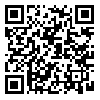Abstract: (1028 Views)
Commercial complexes have grown significantly in Iran in the last decade and are important for various reasons such as large scale and wide range of visitors. As there are interactions between globalization and regionalism, some viewpoints on the critique of the design of commercial complexes and malls, due to technological advances and the conditions of globalization, make these centers similar and repetitive elements in the world and promoters of consumerism. While some other viewpoints, for reasons such as branding strategies and economic growth of these centers, emphasize on a unique and context dependent identity. The purpose of this study is to explain the intertextuality of the architecture of commercial complexes by reading the relationship between the architectural works of this field and its contemporary or earlier works in Iran and the West. This study also seeks to find out the types and dimensions of the use of intertextuality in the architecture of contemporary commercial complexes. The methodology of the present research is based on Saunders Research Onion. The research philosophy of present study is interpretive epistemology, the research approach is qualitative type and the research strategy is content analysis. It is also explanatory in terms of the type of results. Data gathering was done by document- library information and field survey and the method of data analysis is descriptive and inductive analysis. The samples studied in this study are a selection of contemporary commercial complexes in Iran. The results show that in the intertextual reading of architectural works, the continuity of texts with each other and the effects of interaction and confrontations between globalization and regionalism are evident. The intertextual levels can be classified into "strong / weak" and "explicit / implicit" and the Hypertextualite "imitation / change". Also, the development of technology, cultural & technological exchanges, and the power and experience of the designer in idea generation are effective on the intertextuality of the architectural works of commercial complexes. The results also show that the use of intertextuality in the architectural form of commercial complexes in Iran is in form of historical, geographical and cultural representations and imitations or adaptations of the works of prominent Western architects. From a semiotic point of view, by considering commercial complexes and malls as controlled cities, one can observe the growth of collages of Simulacrum that are a reproduction of other spaces and a manifestation of the use of intertextuality in these centers.
Keywords: Intertextuality in architecture, Representation, Collage, Simulacrum, Commercial complexes
Type of Study: Research |
Received: 2023/05/8 | Accepted: 2021/10/2
Received: 2023/05/8 | Accepted: 2021/10/2
| Rights and permissions | |
 |
This work is licensed under a Creative Commons Attribution-NonCommercial 4.0 International License. |




